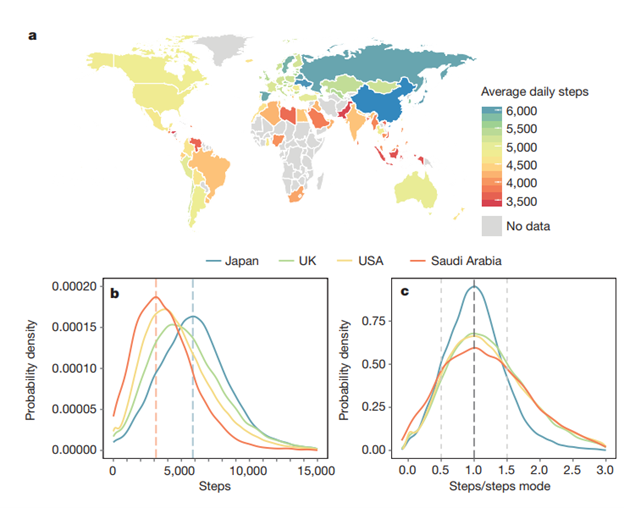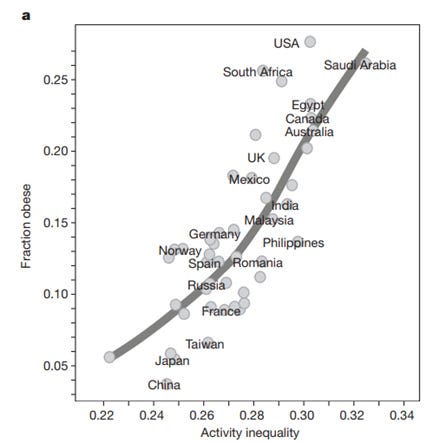For most of us, walking is very easy. We can do it without thinking. Yet despite this innate locomotive ability, we Americans don’t seem to do much very much of it. Perhaps this isn’t surprising, our country is not conducive toward walking. This is the nation that basically invented suburbia, the drive-through, the massive SUV, and Los Angeles. It is not a place that makes walking easy.
We know we are supposed to walk more than we do. Walking is good for us. We track our steps to see if we are ‘getting our steps in’. Yet how much do we actually walk in America?
One data source is the National Household Travel Survey, which is a serious government survey, conducted by the serious Federal Highway Administration. The survey asks Americans to describe their travel patterns on a random day. From what I can tell these trip reports would include walking the dog or going for a stroll but would not include the walking done on a treadmill at a gym, or the walking done around the house, or around a shopping mall.
Using the data from the 2017 version of the survey, Buehler et al (2020) found that the average American (excluding children under 5) walks 91.3 miles in a year, or about a quarter of a mile a day, roughly four-ish city blocks. Viewed in terms of time, the study reported 37.1 hours a year, or about 6 minutes a day of walking. People reported 179.2 Annual walking trips, on average, making fewer than one per day.
If you make almost any trip on foot you are an anomaly. Walk more than 30 minutes a day, on average, and you are in the top 92 percent of Americans. Walk just 10 Minutes a day, you are in the top 85%.
Compared to other countries we do indeed seem to walk less. Comparing national transport surveys about 12% of trips in America are done on foot, however these surveys have different methodologies, it isn’t a perfect comparison.

We might be getting fewer trips in, but are we getting fewer steps in? Fitness trackers on smartphones allow an individual level, largely apples to apples comparison based on individual smartphone users. Based on a “global” (46 countries with at least 1000 users) study of smartphone data using measurements from 717,527 people, the average smartphone user walked 4961 steps in a day.

In terms of comparing countries, the US comes in 30th of 46 with an average of 4,774 steps, though we are ahead of some properly sedentary countries such as Saudi Arabia.

5000 Steps is about two miles of walking. This is well ahead of that travel survey estimates, which makes sense as many of our steps will be simply puttering around the house, or otherwise not engaged in travel. Of course, step counters simply measure any activity, so it may be that this difference is not exclusively driven by walking. So, while we may end up getting some steps in, we really do walk less than many other countries, and we really don’t use walking of a means actually going anywhere.
How much we walk on average may not be the most relevant factor. find stronger correlations between “activity inequality” (The Gini index of step counts within the country) and obesity, to be stronger than that of pure average step count. This suggests that for these headline health measures at least, it isn’t so much how many steps we do on average, but how many of us do not. High activity inequality in Saudi Arabia is largely driven by reduced activity among women.

The instinct that we don’t walk very much in the US seems largely true. We don’t walk for travel, and we are somewhat less physically active than many other countries.
Two main thoughts come out of this. The first one is “How much should we be walking?” we have all heard the 10,000 steps goal, which most of us are clearly not hitting, but how much walking is “enough”? What would “enough” even mean? The second thought is what are the factors that contribute to a lack of walking or activity inequality? In particular what is the impact of the built environment, and how walkable does it need to be for people to start actually walking?
More on those, perhaps, next time.




